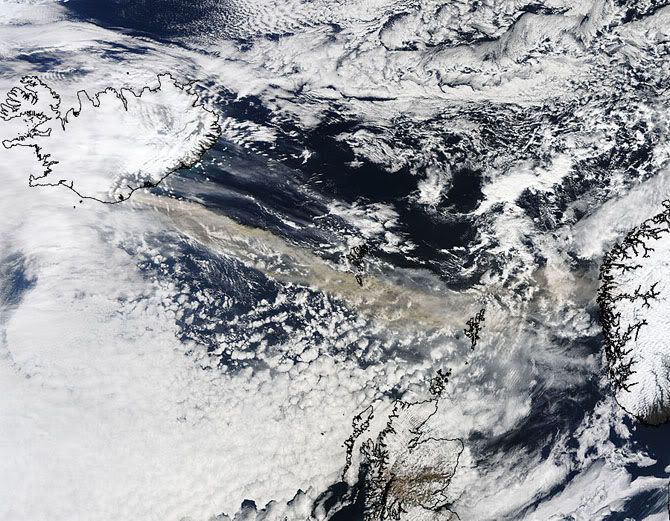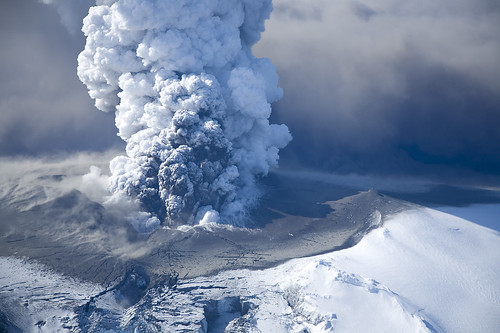
ICELAND'S first volcanic eruption in six years has forced 600 people to flee their homes and brought a halt to all flights into and out of the Nordic island nation.
Smoke could be seen rising from behind Eyjafjallajoekull glacier and volcanic ash filled the sky after the eruption - foretold by a week of localised earthquakes - began.
No casualties were reported in the remotely populated area, about 125km east of the capital, Reykjavik.
But the risk of floods posed by melting glacial ice prompted the authorities to declare a state of emergency and to evacuate the area.
It was Iceland's first volcanic eruption since 2004, and the first near Eyjafjallajoekull, in the south of the island, since 1823.
"We did not have time to be afraid and everyone was so calm and stoical," farmer Dorhildur Bjarnadottir, 51, said in Hvolsvoellur, a small town of 800 near the glacier where some of the evacuees took refuge.
"The worst part in all of this is to leave our animals behind at home," her husband said.
Three Icelandic airports - including the main international airport in Reykjavik - were closed, and all air traffic to and from Iceland had been suspended by midday yesterday.
"Around 600 people have been evacuated and the area is still closed," local police chief Kjartan Thorkelsson said.
"Because the eruption is still going strong, we will continue to keep the highest level of security."
He added: "All roads are closed and continue to be closed, but those who need to drive between places will be registered and allowed to do so. We encourage people who have been evacuated to remain calm."
But as authorities realised the volcanic ash would not spread as far as they initially thought, some aircraft were allowed back into the sky, with only the immediate area around the volcano still off-limits.
And almost all of the 600 people evacuated following a volcanic eruption in southern Iceland have been allowed to return home and flights resumed in the Nordic island country.
"We are allowing almost all of the 600 inhabitants to return to their homes, with the exception of the residents of 14 farms who are not allowed to return home," local police chief Kjartan Thorkelsson said later in the day.
"All roads have now been opened, but we encourage people not to drive unless it is necessary," he said. "There is still an official situation of danger because of the volcanic eruption."
Significant floods were avoided because the fissure eruption occurred between two large glaciers, Eyjafjallajoekull and Myrdalsjoekull, said Magnus Tumi Gudmundsson, a professor of geophysics and civil protection adviser.
"We are extremely lucky that the eruption did not occur underneath the glacier, so therefore a gigantic glacier flood did not occur," Gudmundsson said. With about 15 magma exits at the fissure, the volcano "is not a big eruption" by Icelandic standards.
But Gudmundsson warned that extreme caution had to be exercised, because the eruption was taking place so close to two large glaciers.
"The eruption could end within one or two days, but also within one or two years," he told reporters.
The Red Cross opened three evacuation centres in the towns of Hella, Hvolsvoellur and Vik.
Asked by Swedish public radio if she felt there was any danger, local resident Christina Bengtsson said the biggest problem was volcanic ash.
"The ashes can be dangerous for the animals," she said. "When we went out before, we could feel (the ash) in our mouths. From my window, I see a red sky. If I went out the door, I could also see fire."
http://www.heraldsun.com.au/news/world/ ... 5843593783


















